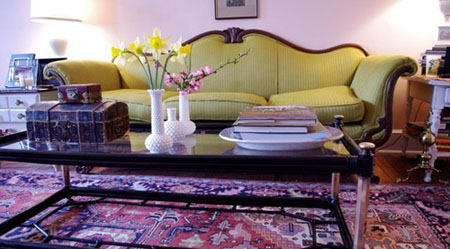Recent Posts
How “Undecorating” Is Shaping 21st-Century Interiors
Posted by on

In the wake of the Great Depression, the modernist furniture movement emerged as a purposeful response to both economic necessity and changing aesthetic values. Prioritizing function over form, this design shift moved away from the elaborate ornamentation of Victorian-era furnishings and toward a cleaner, more restrained style. Influenced heavily by European design philosophies—especially the Bauhaus and Scandinavian movements—modernism in the United States came to be defined by linear forms, minimal embellishment, and practical construction. Its popularity endured throughout much of the 20th century, eventually becoming synonymous with mid-century design principles.
Following the financial recession of 2008, designers and cultural commentators began to ask a familiar question: how would furniture and interior design evolve in the face of economic adversity? Much like the response to the Great Depression, post-2008 interiors gravitated toward minimalism and functionality. However, a more nuanced movement began to take shape—one not entirely reducible to traditional modernism. Instead, the emerging trend was identified as “undecorating,” a term coined to describe the increasingly prevalent inclination toward eclectic, lived-in interiors built around authenticity, story, and imperfection.
The Rise of Eclectic Composition
Rather than adhering strictly to any singular design period or philosophy, today’s homeowners are embracing stylistic freedom—what some experts describe as an “eclectic modernism.” Maxwell Gillingham-Ryan, founder of the influential design blog Apartment Therapy, remarked in an interview with The New York Times, “There’s no longer any good or bad. That new openness is the story. We’re all swirling around together.” Indeed, this openness has manifested in homes that pair heirloom Chippendale chairs with contemporary Ikea bookcases, antique reproduction tables with modernist lighting, and velvet upholstery alongside raw linen and jute rugs.
At its core, this approach emphasizes warmth, individuality, and layered narratives. Rather than striving for visual uniformity, homeowners are cultivating interior landscapes that reflect their personal histories, travels, and tastes. The result is a space that feels both curated and comfortable—a departure from the sleek sterility that often characterizes traditional modernism.
The Do-It-Yourself Revival
Contributing to the undecorated aesthetic is a growing do-it-yourself spirit. With professional interior design services remaining a luxury for many, individuals are taking their homes into their own hands—literally and figuratively. Christiane Lemieux, founder of DwellStudio and author of Undecorate, observes, “[Amateurs] aspire to a certain level of interior design, but professional help is beyond their reach. So they go at it their own way. Now they’re the authorities.”
This democratization of design has given rise to a new form of expertise—one rooted in experimentation, reinvention, and self-expression. Homeowners are increasingly reconfiguring old furniture, sourcing vintage finds from auctions and estate sales, and integrating high-quality reproduction pieces into their homes. This layered, personal approach results in interiors that are as unique as their inhabitants.
A New Definition of Value
This undecorating movement has also changed the way people perceive value in furniture and design. In contrast to the pristine uniformity prized by previous generations, today’s homeowners are embracing character, patina, and history. A Victorian table bearing the marks of time is no longer seen as flawed—it is celebrated for its authenticity and narrative richness. Similarly, reproduction furniture is not dismissed as mere imitation but appreciated for its craftsmanship, historical fidelity, and adaptability.
Modernism in the 21st century is less a strict design doctrine than a flexible framework—one that privileges comfort, creativity, and context. In many ways, the new modernism aligns closely with the values we have championed for decades: timeless elegance, craftsmanship over convenience, and a reverence for history made relevant to the present.
The Enduring Influence of Modernism Reimagined
While it is still too early to define the contours of 21st-century modernism in absolute terms, a few patterns have begun to emerge. Interiors are increasingly layered rather than rigid, expressive rather than formulaic, and reflective rather than prescriptive. This return to warmth and individuality, underscored by a renewed appreciation for quality and heritage, suggests that the future of modernism may well be rooted in the values of the past.
As always, time will be the final arbiter. But one thing is certain: the imagination of homeowners continues to shape the trajectory of design, not by following trends, but by rewriting them.









